I am trying to gain some intuitive understanding of the following circuit:

simulate this circuit – Schematic created using CircuitLab
This is a simple voltage follower with a trace short between the output and inverting input. There is also a feedback path to the non-inverting input with a substantially higher resistance. So I would assume that virtually the feedback is entirely negative, and the circuit should behave just like a simple voltage follower. Indeed, the operation point seems to reproduce V1 as output voltage.
However, when simulating in LTspice, I observe a tremendous a noise originating from R2. Now the thermal noise of R2 would be about 0.41 nV/rtHz. And the circuit gain is 1 as mentioned before. But LTspice reports 41 nV/rtHz as output noise and attributes virtually all of it to R2.
Why is the noise of R2 gained by a factor of R1/R2?
The noise of R3 is amplified by the same factor, although it is not in this feedback path.
Why is the noise of R3 gained by a factor of R1/R2?